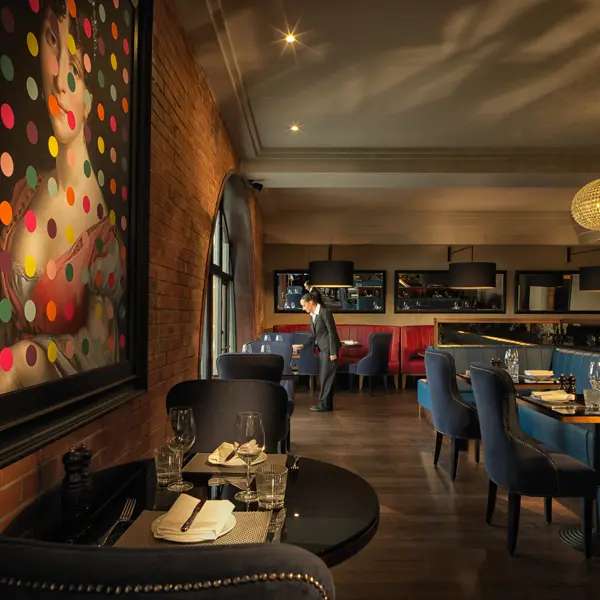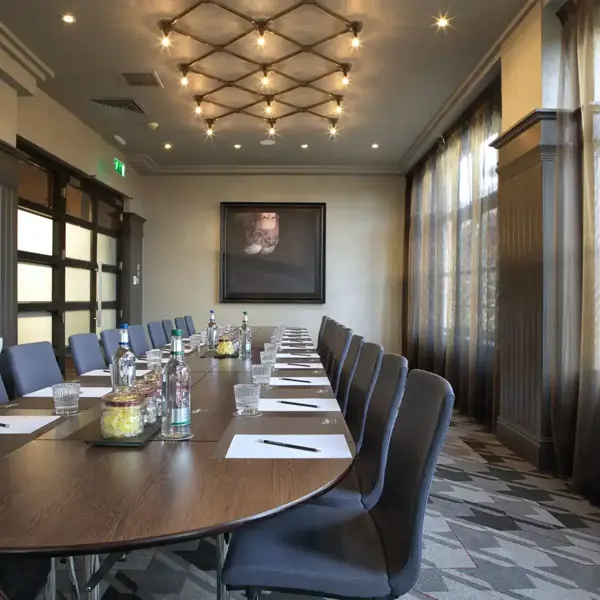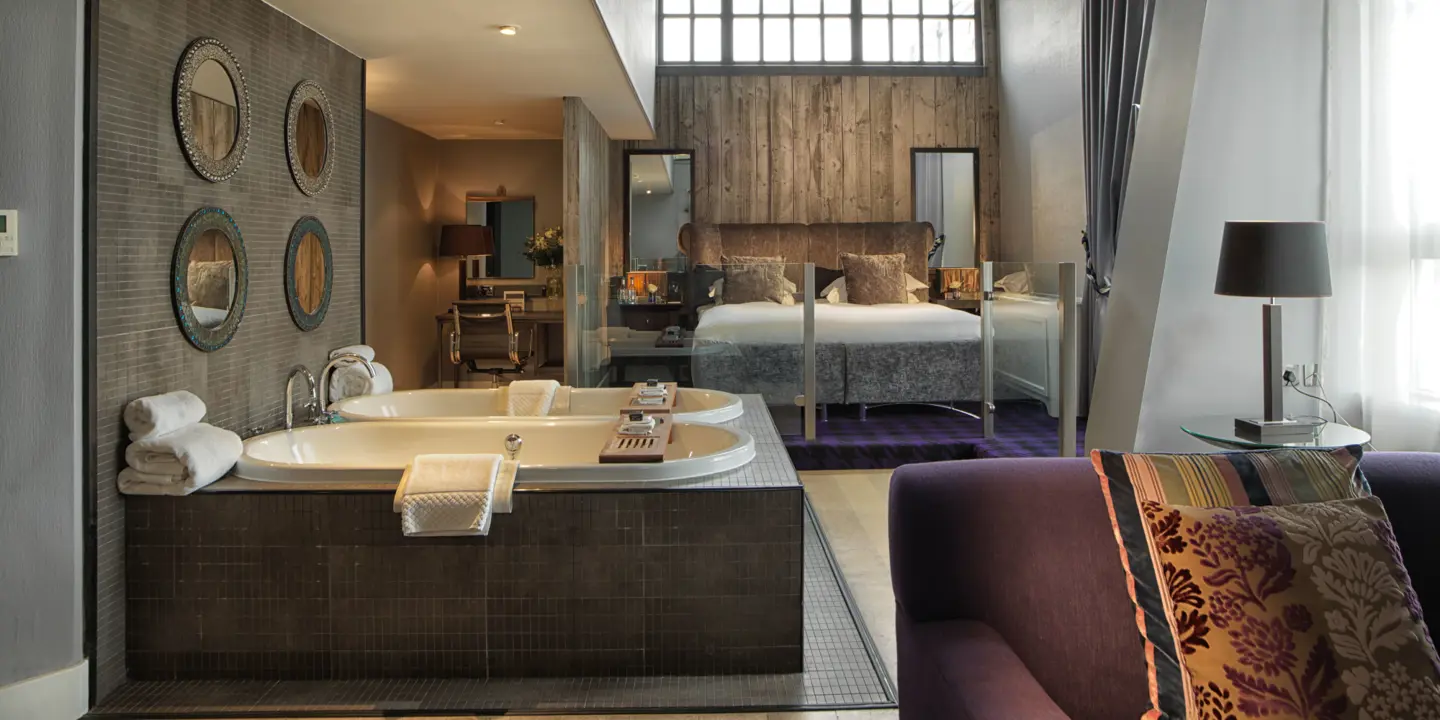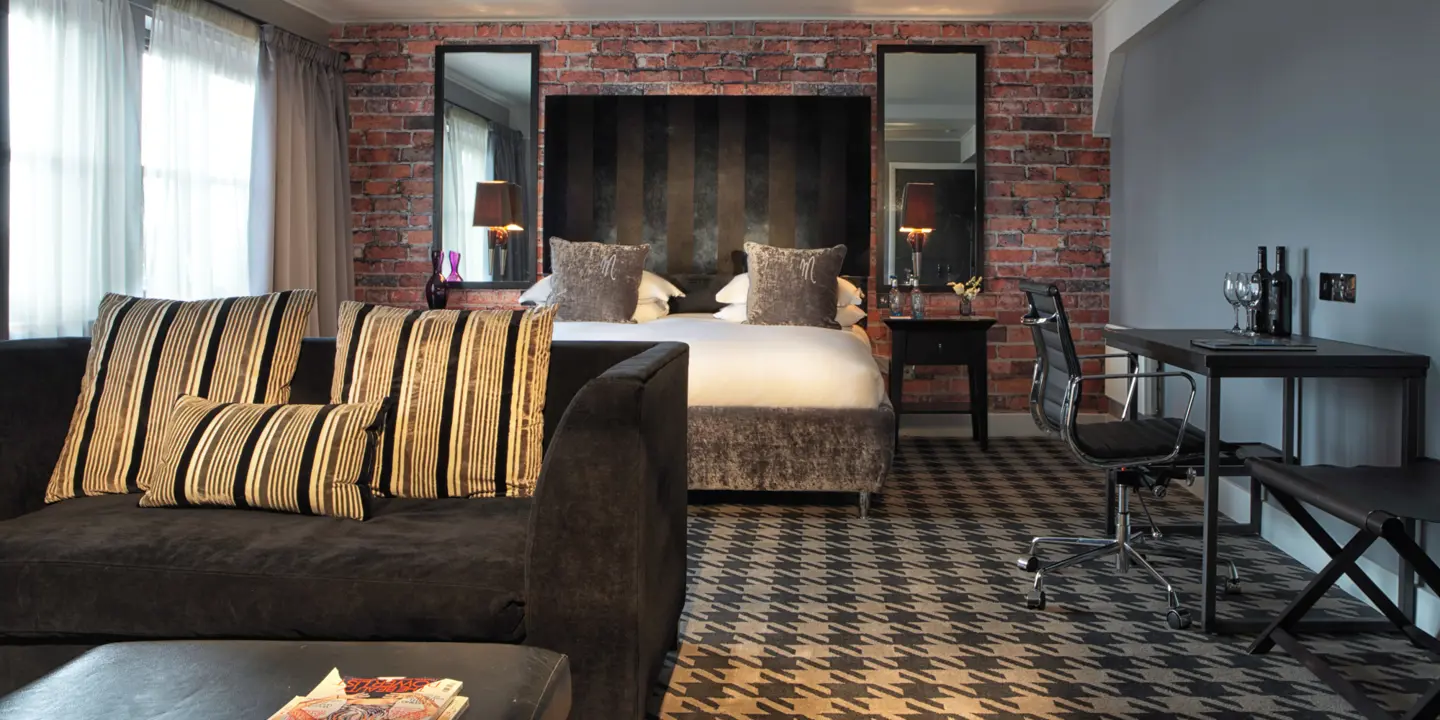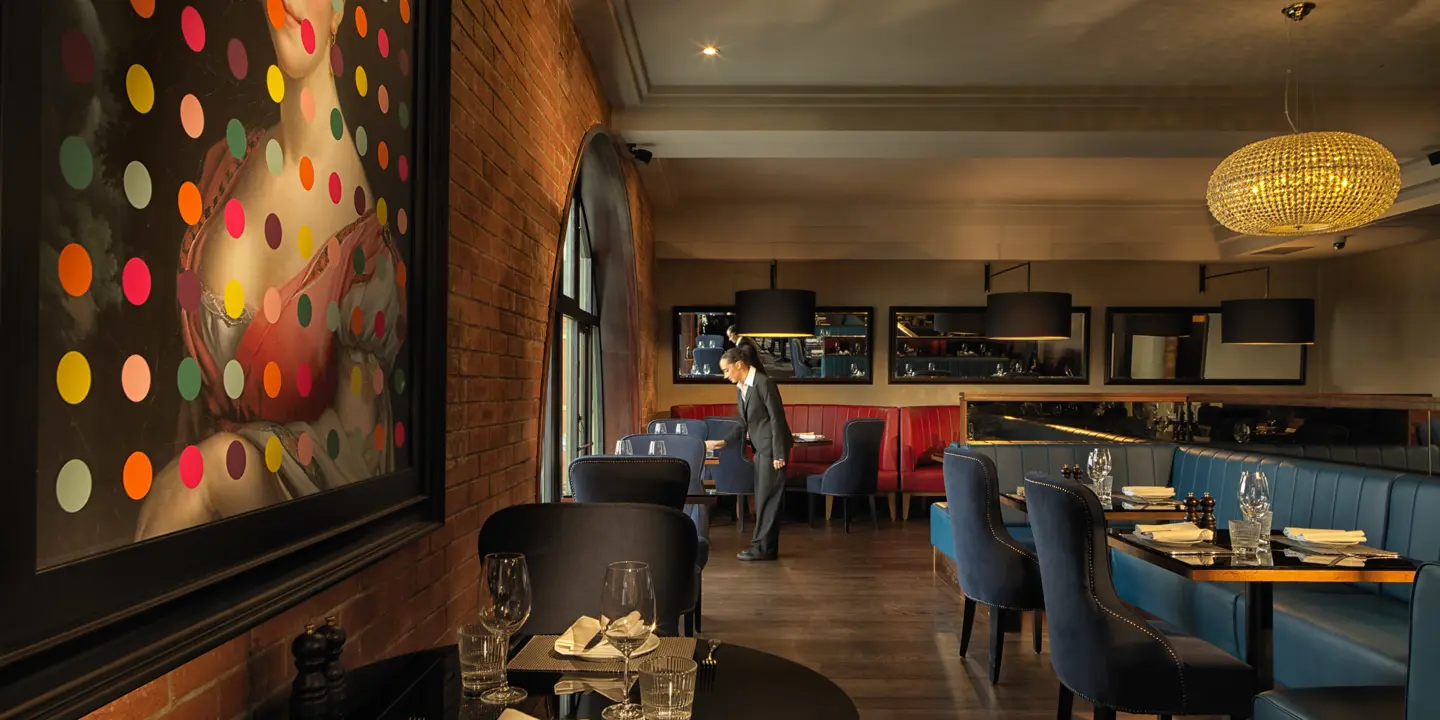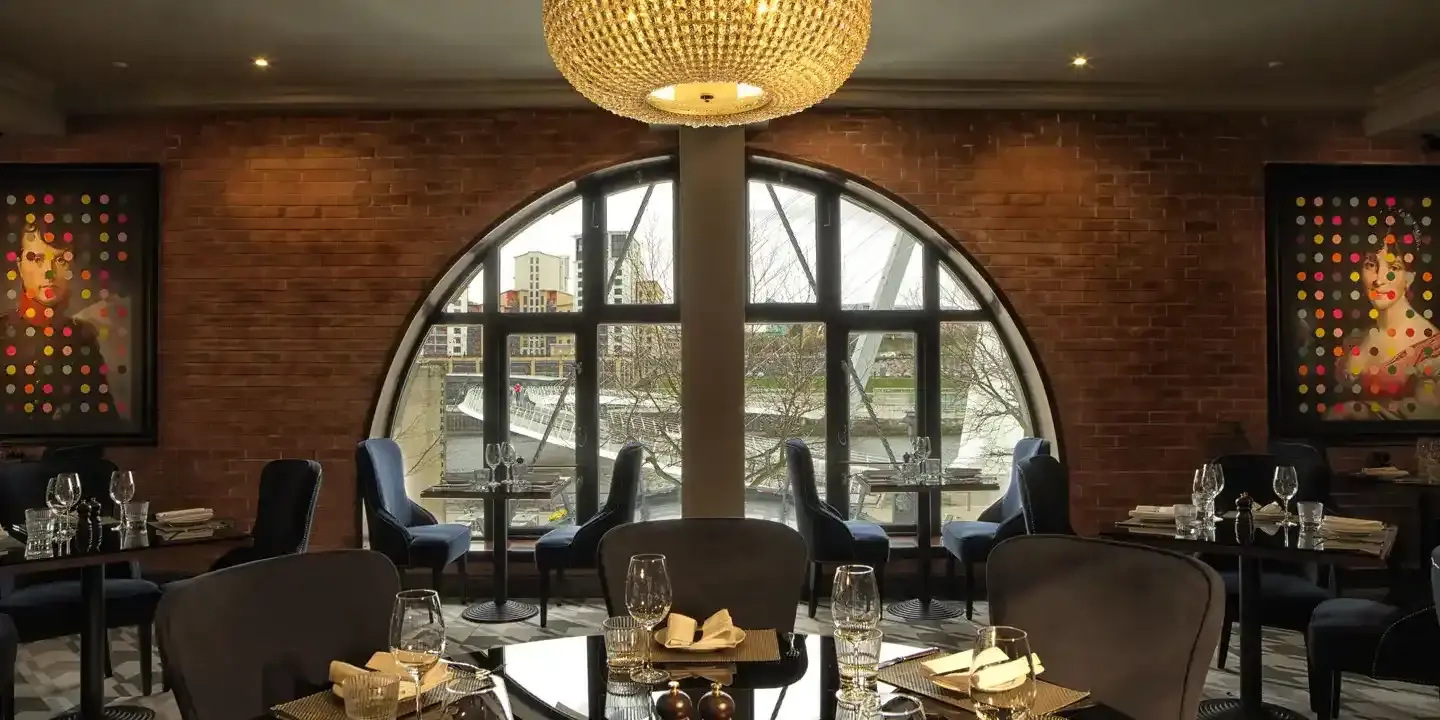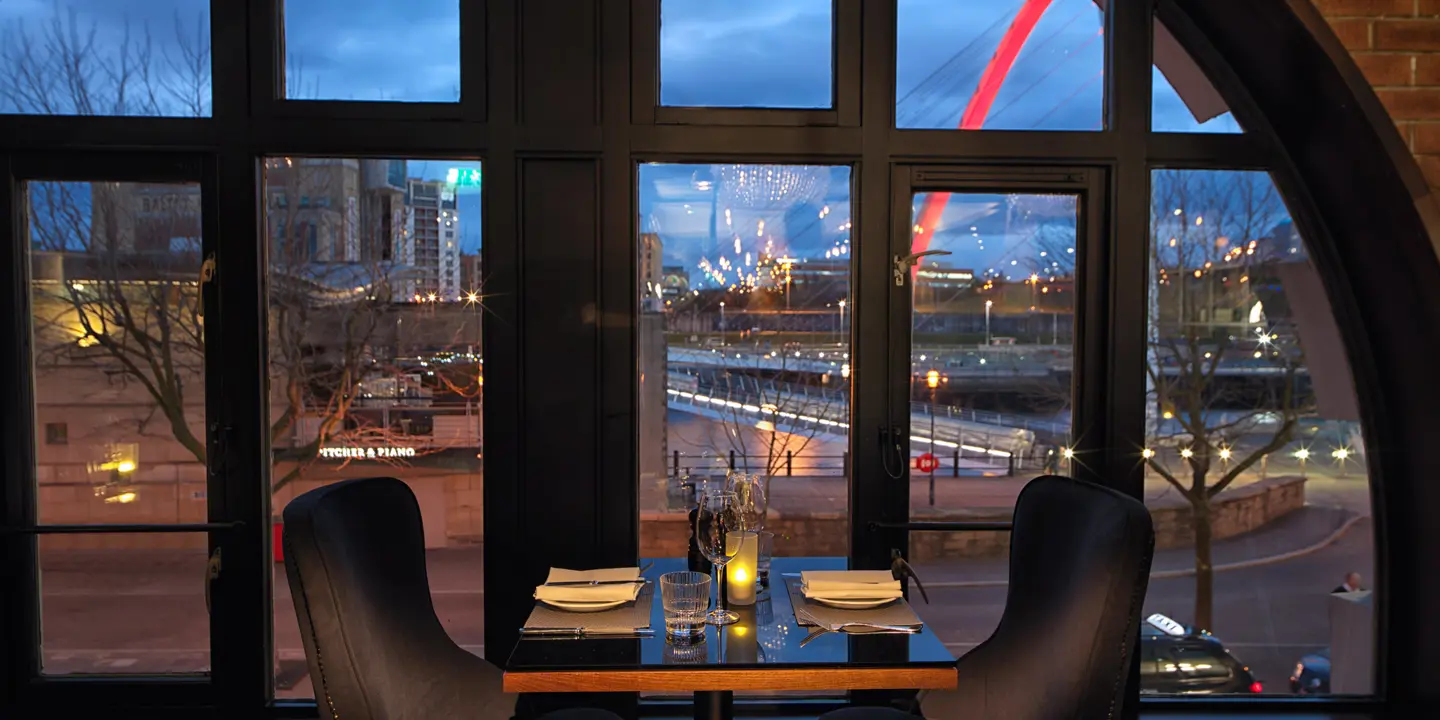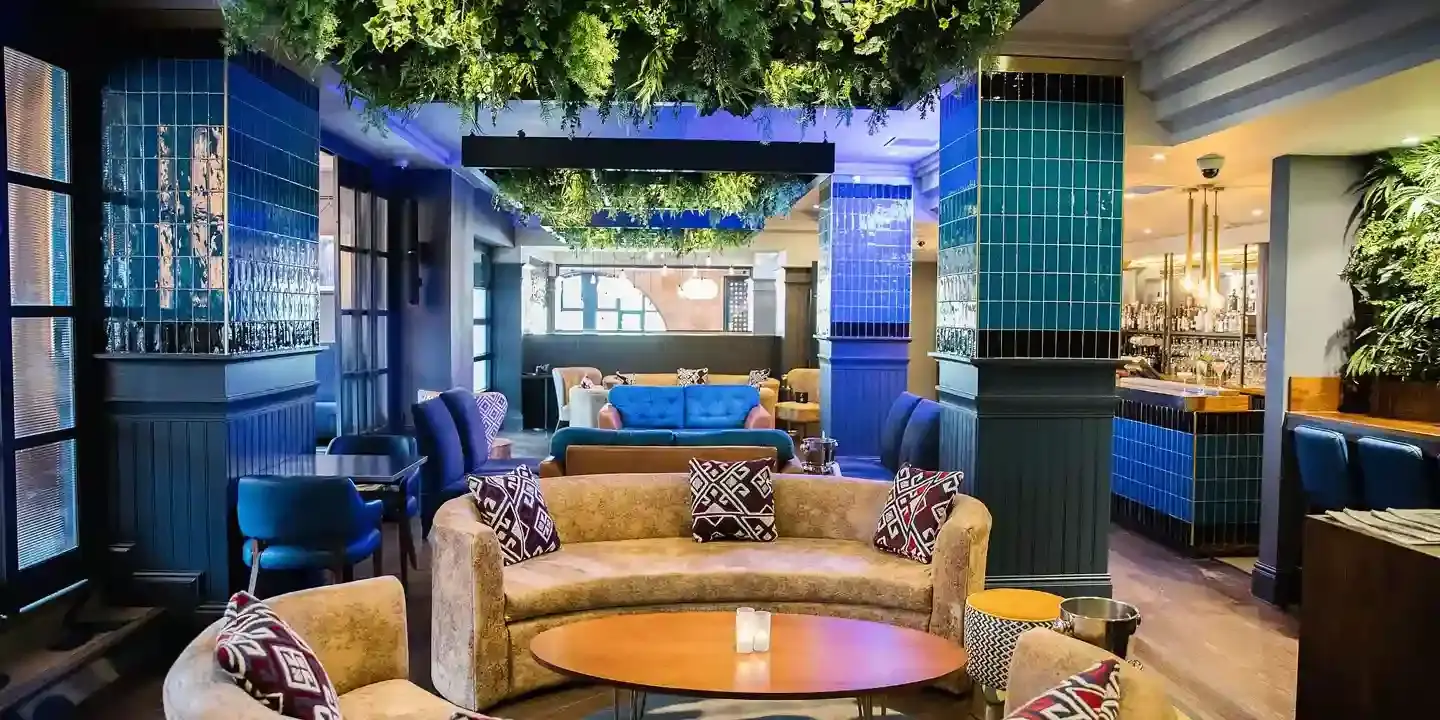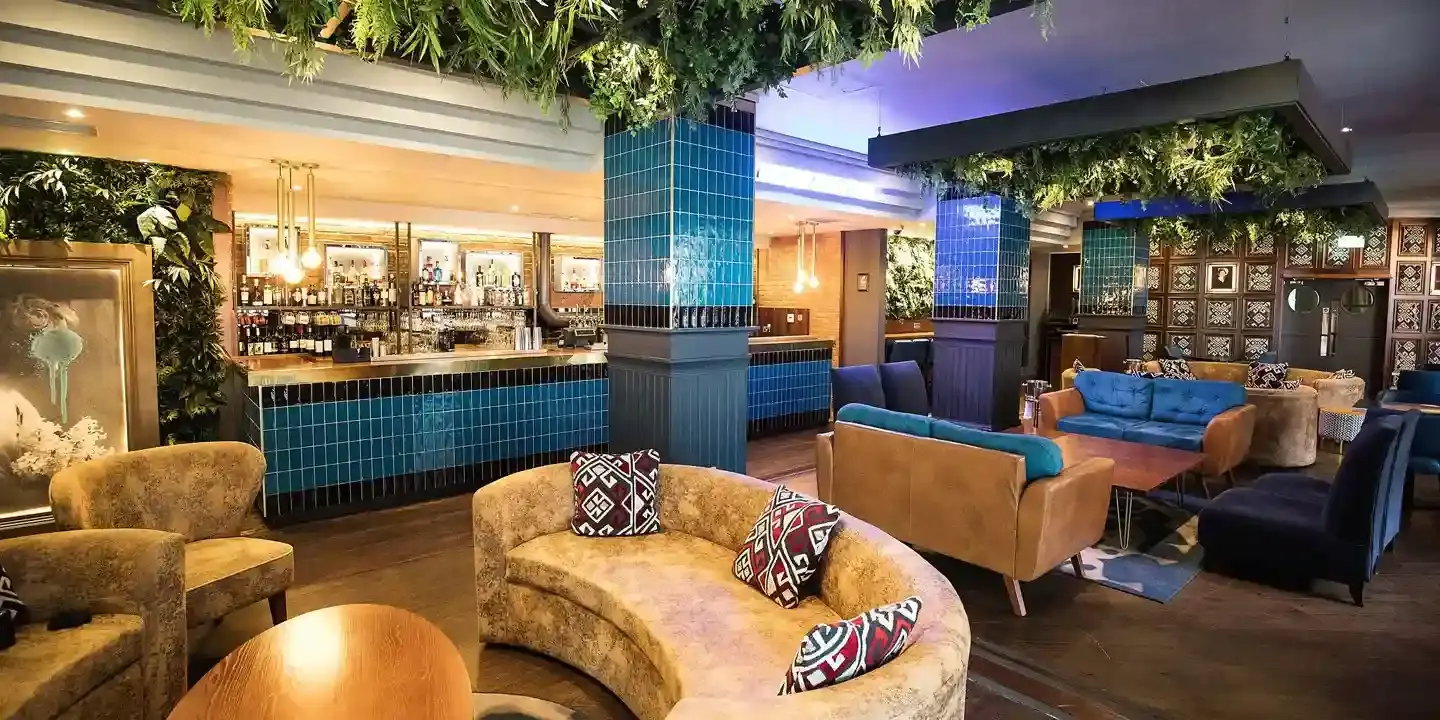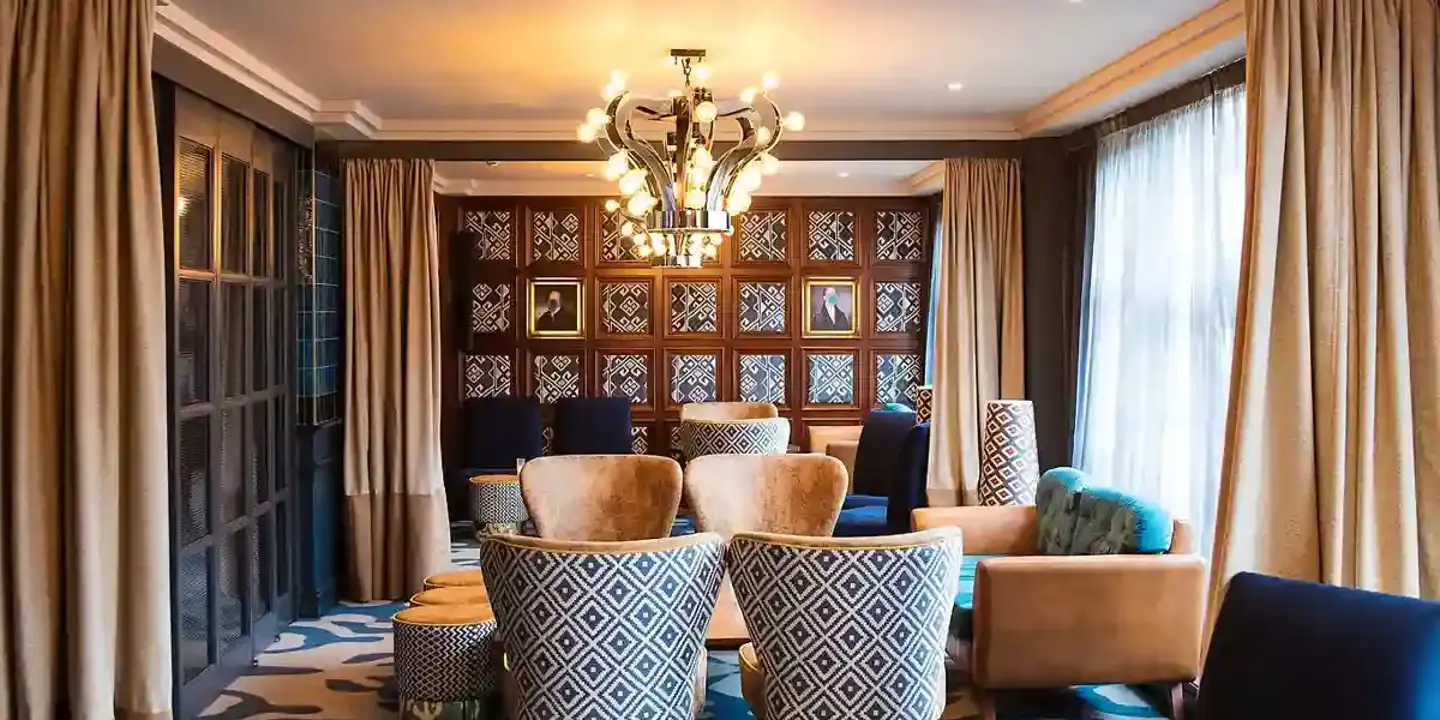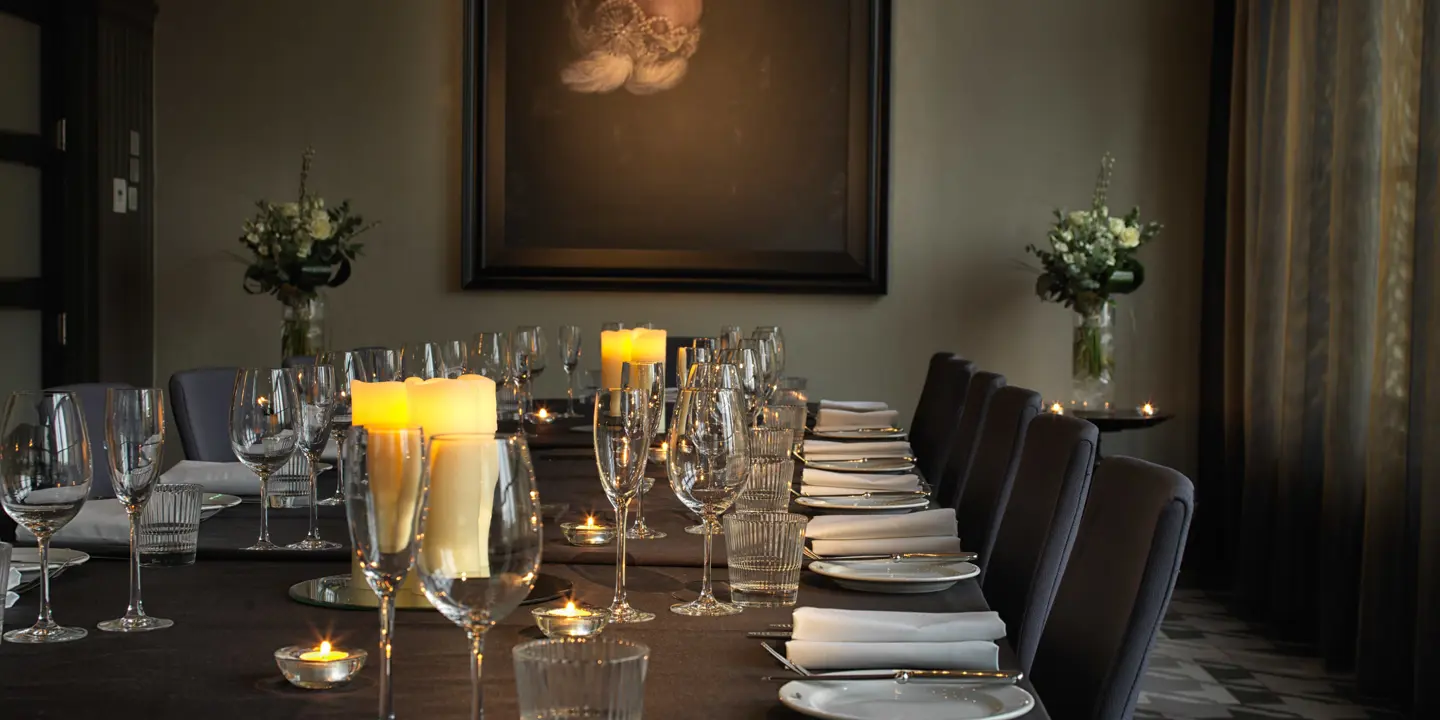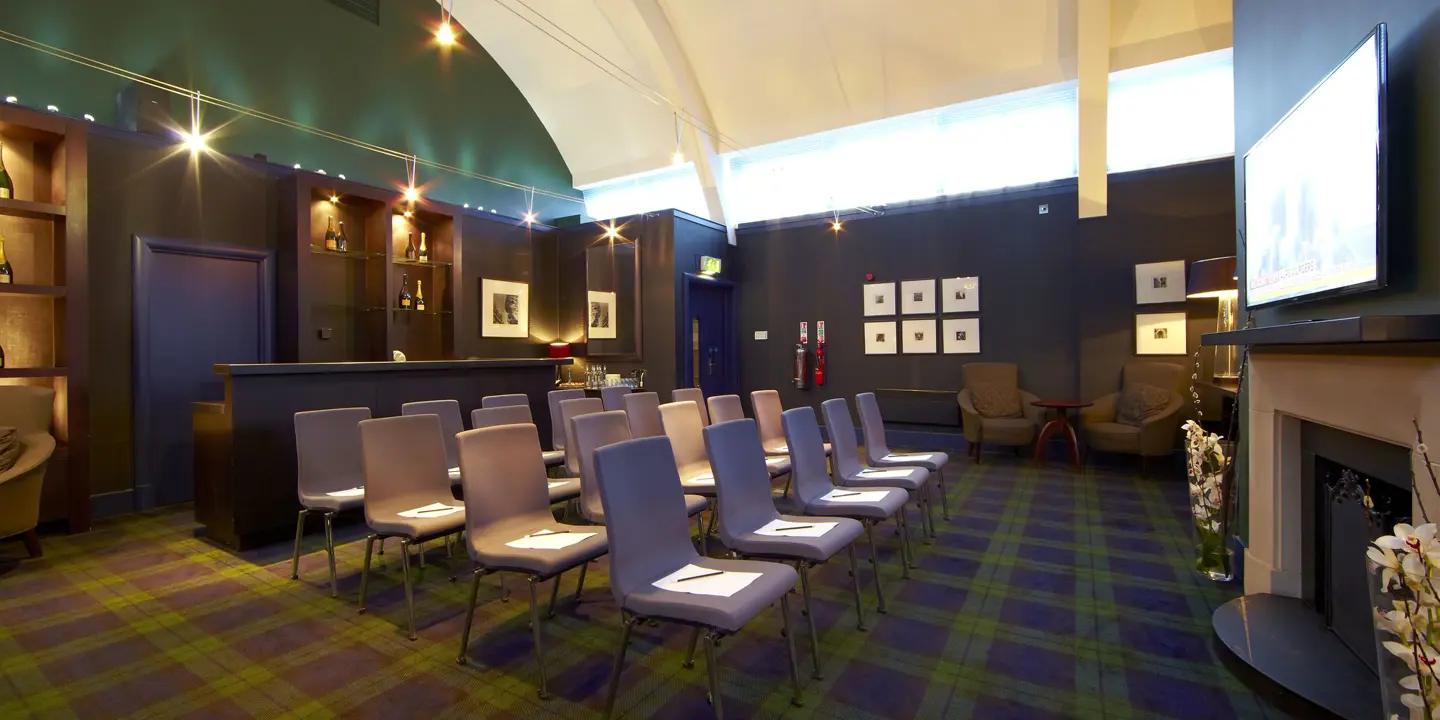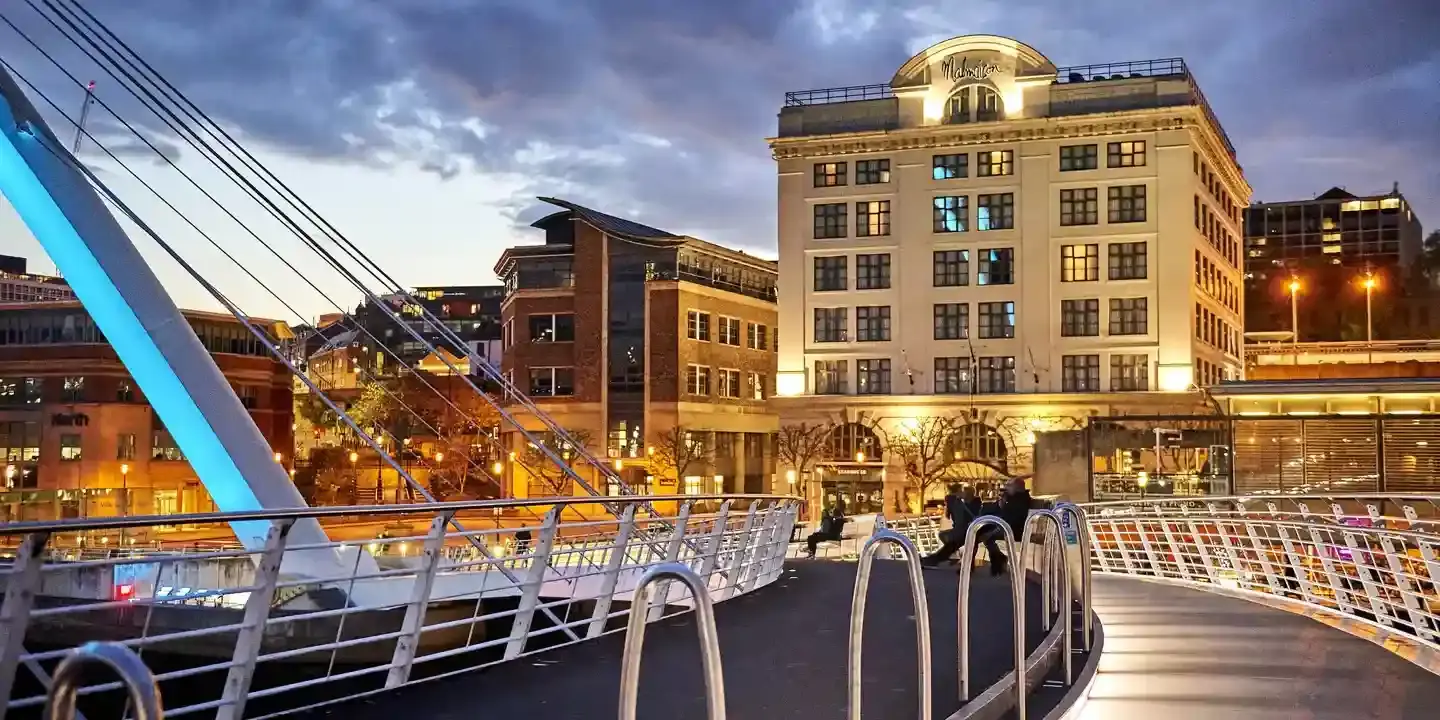
BEST RATES AND DATES

Exclusive best rates at Malmaison Newcastle
Newcastle
104 Quayside, Newcastle Upon Tyne, NE1 3DX, United Kingdom
Tel: 01913898627
Located in the lively Quayside district, Malmaison Newcastle offers a distinctive blend of luxury and comfort in the heart of the city. Housed in a striking Grade II listed building, our hotel was once a Co-operative Society warehouse. We're perfectly situated to offer you effortless access to a collection of Newcastle's top attractions, including the Gateshead Millennium Bridge, the Sage Gateshead music venue, and the Baltic Centre for Contemporary Art. Furthermore, we are just a stroll away from some of the city's best shopping, dining, and entertainment locales.
Comprising of 122 elegantly designed rooms and suites, this Newcastle hotel also houses the exquisite Chez Mal Brasserie & Bar, a serene spa offering a variety of relaxing packages and treatments, and more, promising a memorable and comfortable stay.
Useful Hotel Information
- Check in from 3pm
- Check out by 11am
- Reception is 24/7
- Breakfast is served Mon-Fri 7am to 10am
- Breakfast is served Sat and Sun 8am to 11am
- 1 mile from Newcastle Central Station
- 0.5 miles from the Sage Gateshead
- 0.5 miles from the Theatre Royal
Hotel Facilities and Amenities
Choose from our selection of beautifully appointed rooms, including Standard Rooms, Club Rooms, and Suites, each furnished with modern amenities such as flat-screen TVs, complimentary Wi-Fi, and plush beds.
Our signature restaurant Chez Mal Brasserie & Bar offers an array of contemporary dishes crafted with fresh, seasonal ingredients. Enjoy pre-dinner drinks or a nightcap in our elegant Chez Mal Bar.
Malmaison Newcastle is equipped with a variety of private dining and event spaces for your special occasions.
Keep up with your fitness routine with our well-stocked residents gym, featuring quality exercise equipment just for you during your stay. Please note, there will be no access to our gym between 01-June and 14-July 25.
Or rejuvenate by booking one of our spa treatments, including massages, facials, and body treatments designed to refresh and revitalise.
For your business needs, our hotel provides a range of meeting and conference rooms fitted with the latest technology and ultra-fast WIFI.
NEW YEAR… NEW ME!
Hold onto your throw pillows Newcastle! Big things are happening at Malmaison - from January 2025 your beloved bedrooms are getting a dazzling makeover. Think chic, think comfort, think next-level luxury.
Don’t worry, we’ll stay fabulous throughout the process, our reception team will still be on hand to check you in and make sure you have all you need during your stay. Our mixologists will still be shaking up a storm in the bar and our chefs will still be working their magic in the kitchens, so there’ll be no shortage of delish dishes for you to feast on and we’ll always have a bevvy on hand!
Disruption levels will be kept to a minimum and don’t worry, our refurb crew deffo aren’t the work through the night types! We can’t wait to show off our cool new glow up. Soon, you’ll be snoozing in style in rooms that are fresher than your weekend plans. Stay tuned for updates, and prepare to fall in love all over again. ✨💖
Heads Up!
From 06-January 25 we’re going CASHLESS! No more fiddling with coins or notes - just swipe, tap, and go. You can pay with cards or your favourite digital wallets… say hello to effortless payments! 💳
Our guests can enjoy:
- FREE, FAST WIFI
- BEAUTIFUL ROOMS & SUITES
- CHEZ MAL BRASSERIE & BAR
Located in the lively Quayside district, Malmaison Newcastle offers a distinctive blend of luxury and comfort in the heart of the city. Housed in a striking Grade II listed building, our hotel was once a Co-operative Society warehouse. We're perfectly situated to offer you effortless access to a collection of Newcastle's top attractions, including the Gateshead Millennium Bridge, the Sage Gateshead music venue, and the Baltic Centre for Contemporary Art. Furthermore, we are just a stroll away from some of the city's best shopping, dining, and entertainment locales.
Comprising of 122 elegantly designed rooms and suites, this Newcastle hotel also houses the exquisite Chez Mal Brasserie & Bar, a serene spa offering a variety of relaxing packages and treatments, and more, promising a memorable and comfortable stay.
Useful Hotel Information
- Check in from 3pm
- Check out by 11am
- Reception is 24/7
- Breakfast is served Mon-Fri 7am to 10am
- Breakfast is served Sat and Sun 8am to 11am
- 1 mile from Newcastle Central Station
- 0.5 miles from the Sage Gateshead
- 0.5 miles from the Theatre Royal
Hotel Facilities and Amenities
Choose from our selection of beautifully appointed rooms, including Standard Rooms, Club Rooms, and Suites, each furnished with modern amenities such as flat-screen TVs, complimentary Wi-Fi, and plush beds.
Our signature restaurant Chez Mal Brasserie & Bar offers an array of contemporary dishes crafted with fresh, seasonal ingredients. Enjoy pre-dinner drinks or a nightcap in our elegant Chez Mal Bar.
Malmaison Newcastle is equipped with a variety of private dining and event spaces for your special occasions.
Keep up with your fitness routine with our well-stocked residents gym, featuring quality exercise equipment just for you during your stay. Please note, there will be no access to our gym between 01-June and 14-July 25.
Or rejuvenate by booking one of our spa treatments, including massages, facials, and body treatments designed to refresh and revitalise.
For your business needs, our hotel provides a range of meeting and conference rooms fitted with the latest technology and ultra-fast WIFI.
NEW YEAR… NEW ME!
Hold onto your throw pillows Newcastle! Big things are happening at Malmaison - from January 2025 your beloved bedrooms are getting a dazzling makeover. Think chic, think comfort, think next-level luxury.
Don’t worry, we’ll stay fabulous throughout the process, our reception team will still be on hand to check you in and make sure you have all you need during your stay. Our mixologists will still be shaking up a storm in the bar and our chefs will still be working their magic in the kitchens, so there’ll be no shortage of delish dishes for you to feast on and we’ll always have a bevvy on hand!
Disruption levels will be kept to a minimum and don’t worry, our refurb crew deffo aren’t the work through the night types! We can’t wait to show off our cool new glow up. Soon, you’ll be snoozing in style in rooms that are fresher than your weekend plans. Stay tuned for updates, and prepare to fall in love all over again. ✨💖
Heads Up!
From 06-January 25 we’re going CASHLESS! No more fiddling with coins or notes - just swipe, tap, and go. You can pay with cards or your favourite digital wallets… say hello to effortless payments! 💳
THE PERFECT LOCATION

104 Quayside, Newcastle upon Tyne NE1 3DX
Experience the extraordinary

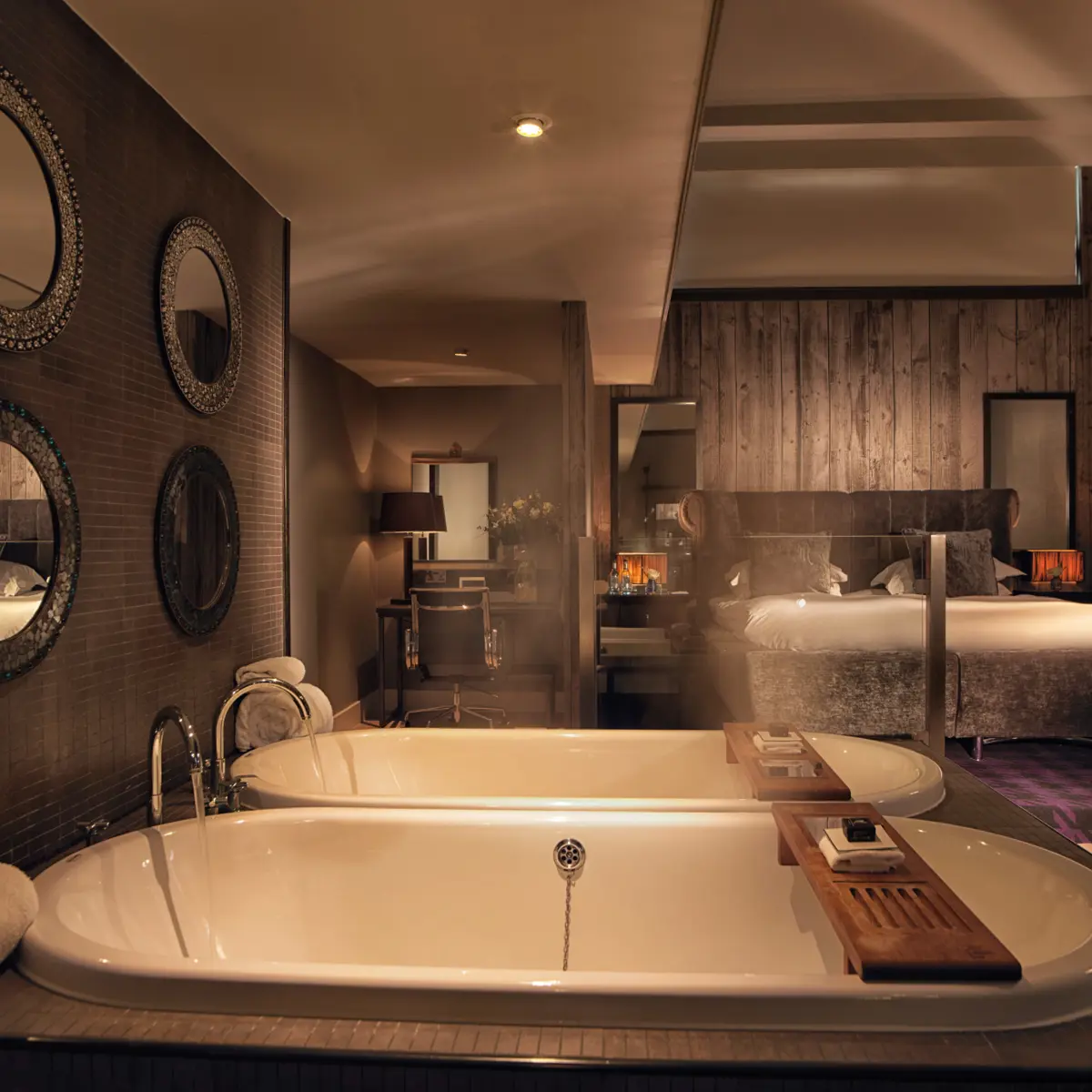
FAQs
See some of our frequently answered questions or access LiveChat to talk to our team.


